Warts is a benign form of skin cancer that occurs due to the proliferation of cells in the epidermis and dermis, caused by the human papillomavirus, and transmitted by contact.
Warts: causes, types, diagnosis and treatment
Warts are a mostly benign local formation caused by epidermal hyperplasia. Papillomas and papillomas most often appear due to the activity of viral infections. The main reason for their appearance is the presence of human papillomavirus (HPV) in the body. HPV infection occurs by family contact, so the bacteria get into the skin or mucous membranes. Various lesions of the skin and mucous membranes, as well as weakened immunity, increase the risk of infection.
According to statistics, more than 60% of the population are carriers of the HPV virus. At the same time, symptomatic HPV may not manifest itself even throughout life. Warts, many of which are called papillomas, appear only on the skin and mucous membranes if there are factors that facilitate this.
There are many different types of warts, the appearance of which is caused by one virus or another. Each type of skin damage can be localized on the skin or mucous membranes. You cannot always get rid of the virus from your body.
Warts on the legs, arms and other parts of the body in adults
Men and women are equally susceptible to human papilloma virus and, therefore, the appearance of tumors such as warts on the skin and mucous membranes. Infection of a virus in the body is possible, both during casual handshakes or the use of general hygiene products and during sexual intercourse. When entering the human body, the virus penetrates the squamous skin epithelium and actively multiplies in it. The incubation period of HPV can range from one and a half months to six months or more.
Warts on the face, genitals, and other parts of the body in women

Female warts can appear on any part of the body at any time in life. In terms of shape, color, and size, they can vary, from small flat warts on the face that are white, which end up in dark genital warts on the mucous membranes of the genitals. It is worth noting that genital warts, according to research results, can cause the development of cervical cancer. In addition, official confirmation of getting the relationship of warts, an external manifestation of HPV, increases the risk of breast cancer.
Papillomas and warts in men
Male organs are less susceptible to infection and active reproduction of the virus in general and the appearance of papillomas and warts in particular. Only a sharp decrease in immunity caused by various diseases can cause the appearance of benign formations on the skin and mucous membranes in men. It should be noted that papillomas and genital warts in men may be localized in the area of the groin and groin, sometimes in the head or body of the penis, at the top of the urinary entrance. direct and direct on it. mucous membrane, in the area around the anus.
What are the different types of warts in children?

People of all ages are susceptible to the appearance of warts. But warts are most common among children and teenagers. The reason for this could be due to the different papilloma-causing viruses. Infection of a child's body usually occurs through contact and family means. Children are more likely to communicate more closely with other babies in large groups and are more likely to "catch" many different viruses from each other. In addition, a baby may become infected with the papillomavirus from the mother during development in the uterus or during childbirth.
Warts: the cause appears
Many factors can contribute to the appearance of warts. The transmission of the papillomavirus, as mentioned earlier, occurs through close contact with an infected person or their belongings. Furthermore, carriers of the virus, without any external manifestations, can also act as a source of infection. In addition, self-infection or in other words does not rule out the possibility of self-infection. So, warts on the face and neck can appear after shaving and are cosmetic. The same applies to papillomas and warts on the legs, chin and armpits. Various lesions of the skin only increase the risk of HPV infection. This usually occurs in swimming pools, gyms, and saunas.
Trigger factor

It is unlikely that the virus that causes the wart formation will enter the body of a healthy person with strong immunity. The risk of infection may increase due to:
- Damage to the skin and mucous membranes.
If they are present, contact the body of an infected person or an object on a surface contaminated with the virus is likely to become infected. HPV can persist in the environment for about 2-3 hours. During this time, the likelihood of someone becoming infected is quite high. Injuries (wounds, cuts, scratches), sweating and so the constant moisture of the skin only increases it.
- High humidity and warmth.
Such a provoking factor is most related to the appearance of warts on the legs. Uncomfortable parka shoes cause the feet to sweat a lot, calluses and damage to the skin can cause epithelial growth like warts on the feet.
- Weakening of the immune system.
Even in the presence of a virus in the body, the appearance of warts is far from observable. A person can carry the virus for decades without even knowing it. With strong immunity, the body continuously suppresses the virus, preventing the virus from multiplying. As soon as the immune system weakens, the virus is immediately activated, accompanied by external manifestations.
Seborrheic warts
With age, the human body has changed dramatically, not only in appearance but also in health. Therefore, a violation of the distribution of basal cells of the epidermis leads to the appearance of benign formations, known as seborrheic warts. In another way, such warts are called aging. It is quite simple to identify old age warts by their characteristic shape:
- They are manifested as papules or protruding plaques on the skin's surface.
- new students are round or oval in shape;
- they are localized, as a rule, on the skin of the intimate areas of the body, as well as on the face and scalp;
- the color of the warts can be golden brown and sometimes even black;
- The sizes of the formations may vary from 0. 5 to 4 cm.
The boundaries of sebum are very clear. They protrude slightly on the skin and may be slightly flattened.
If you have these warts on your hands, face, body or head, you should seek medical attention. To determine the safest, most effective strategies for their treatment and their elimination, it is necessary to carry out differential diagnoses, which help distinguish seborrheic warts from:
- Pigment nevi.
These tumors are benign. Like seborrheic warts, pigment warts are brown or dark yellow in color, close to black. Sometimes the nevi papular surface is covered with hair. Their sizes may vary. In terms of shape, tumors of this type may be represented as giant plaques or flat papules with smooth surfaces.
- Tinea.
Such a benign formation is made up of skin and connective tissues. On the surface, skin tumors have certain similarities with moles and warts. Surfaces of formations may be smooth and keratinized. Their shape is circular. Dermatofibroma is partially located in the upper layers of the skin and partly protrudes on its surface. Usually, single tumors are found. Their color can vary: from pink to gray to purple. Sometimes the skin lump is brown or black. The size of the formations is about 1 cm.
- Melanoma.
Unlike skin and melanoma, melanoma is a malignant tumor. They appear either on the mole site or on nearby tissues. Factors causing malignancy of skin cells are ultraviolet rays, various damage.
Human papillomavirus infection
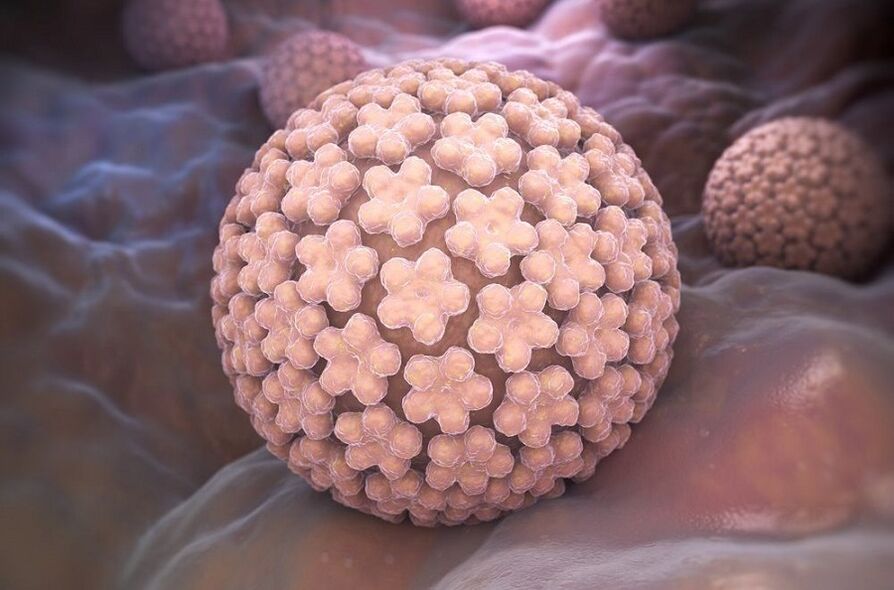
As mentioned earlier, HPV is the cause of HPV infection. To date, more than a hundred varieties of it are known, which can affect the body in one way or another. Each virus causes certain types of warts:
- HPV 1 - benign formation on the palms of the hands and soles of the feet;
- HPV 2 - normal (vulgar);
- HPV 3, 10, 28 and 29 - flat tumor;
- HPV 4 - warts on the soles of the feet and warts in the vulva;
- HPV 6, 11 - papillomas of the larynx and genital warts;
- HPV 5, 8, 9, 12, 14, 15, 17, 19-25, 36, 39, 40 - the general manifestation of the virus, which is the epidermal wart metabolic disease;
- HPV 7 - vulvar warts;
- HPV 13, 32 - local proliferation of epithelial tissues;
- HPV 16, 18, 31, 33, 35 - malignant tumors such as carcinoma and reproductive dysplasia.
In addition, with a decrease in immunity, the human body becomes susceptible to papillomavirus types 26 and 27. In some cases, HPV 30, 34, 37 and 38 can become the cause. out benign and malignant tumors.
It is also important to note that some papillomaviruses are transmitted through home contact, while others are sexually transmitted.
Types of warts: common, warts and others, how to treat them
A fairly large number of papillomaviruses and other causes of the appearance of warts cause different sites of their formations and different characteristics. So, there:
- Conventional warts, also known as vulvar warts.
They are most often located on the skin of the hands. These growths can range in color from flesh to brown.
- Plantar warts.
Such formation develops deep into the tissues, causing a feeling of pain and accompanied by thrombosis of the capillaries, bleeding even when the slightest damage is done. Plantar warts need to be treated by a doctor, not removing them on their own or going to a nail salon.
- Flat warts.
Their localization, as a rule, is observed on the skin of the neck, face, chest, knees and forearms.
- Genital warts are also known as genital warts.
Such formation affects the skin and mucous membranes of the external genitalia, as well as the area around the anus. Their localization can occur at the entrance to the urethra with a subsequent spread.
- Warts around the anus.
Such formations are usually located in the anus and vagina, as well as on the adjacent tissues of the external genitalia in women. In men, the warts around the anus are localized in the anus.
- Laryngeal papilloma.
This manifestation of the virus mainly occurs in childhood. Mass can be high, especially life-threatening, causing airway obstruction.
Genital warts
Genital warts are benign tumors that are localized on the skin and mucous membranes of the external genitalia, as well as in the area around the anus. All genital warts are generally divided into:
- Typical condylomas.
As a rule, such warts are localized at the entrance to the vagina, in the anus, and also on the inner layer of the foreskin. In terms of their shape, such tumors can resemble cauliflower.
- Papillary warts.
The surface of tumors is smooth and does not contain keratinized layers.
- Hyperkeratosis warts.
Unlike previous warts, the surface of such anus formations is covered with keratinized tissue particles. Mostly, hyperkeratotic cysts are localized on the outer leaves of the foreskin, penis and scrotum in men, as well as on the labia in women.
- Flat warts.
Formations are represented by spots that protrude on the skin's surface slightly. In fact, they are invisible and are not always immediately identified by a person.
The giant Condylomas Buschke - Levenshtein
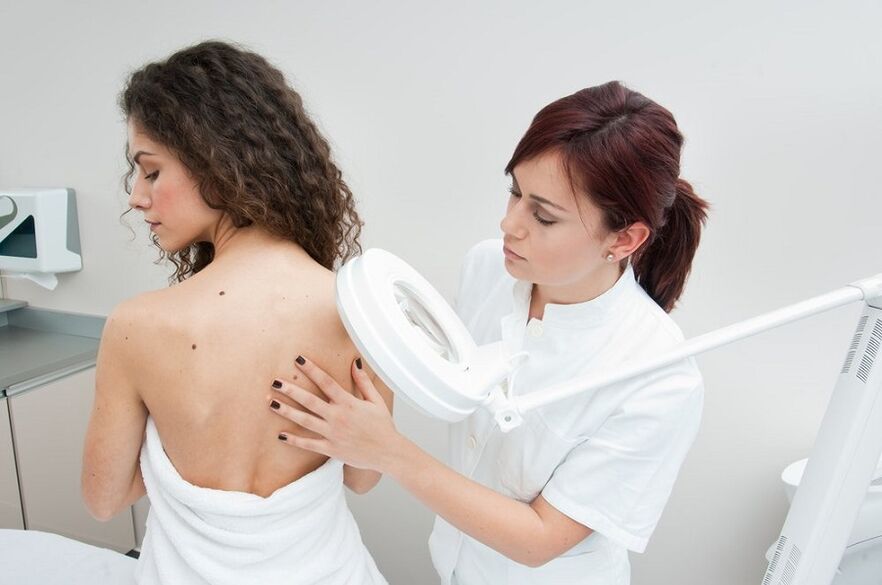
Genital warts appear when the HPV 16 virus enters the body, according to the results of some studies, the type 1, 6, 11, 18, 31, 33 HPV virus is transmitted through succession. contact and sexuality, can also lead to the appearance of such warts. The second name of such an education is the giant Bushke-Levenshtein condyloma. Its main differences are:
- rapid growth in size;
- the ability to improve after treatment;
- destruction of nearby tissues;
- The likelihood of malignancy is high with the further development of squamous cell skin cancer.
Young people and the elderly are most susceptible to this type of cancer. In the male body, the virus manifests itself by the appearance of genital warts on the tissues of the penis glans and foreskin. Sometimes the condyloma Buschke-Levenshtein can be localized on the deep side of the penis. In the female body, the warts are usually located around the anus, rectum and groin. Their appearance is not excluded on the face, oral mucosa, as well as other skin and mucous areas.
Common warts on the fingers and other parts of the body
The most common benign skin lesion is vulvar warts, also known as common warts. Superficially, such formations are dry and hard emulsions on the skin. Their surface is uneven. Dimensions vary within a few millimeters. Usually, such warts are localized on the fingers and hands, as well as on the face. The colors of the newbies are usually gray, golden brown or flesh.
Palmar-plantar warts on the arms and legs
The warts can easily appear on both the palms of the hands and the soles of the feet. They come in a variety of shapes and colors, ranging from light yellow to dark brown. These epithelial formations are common in populations. They can be either mosaic-like or deep (hyperkeratotic) on the outside.
Treating palm warts and warts is complex. A dermatologist, in the course of a thorough diagnosis, is necessarily ruled out edema and tuberculosis.
Flat warts on the face
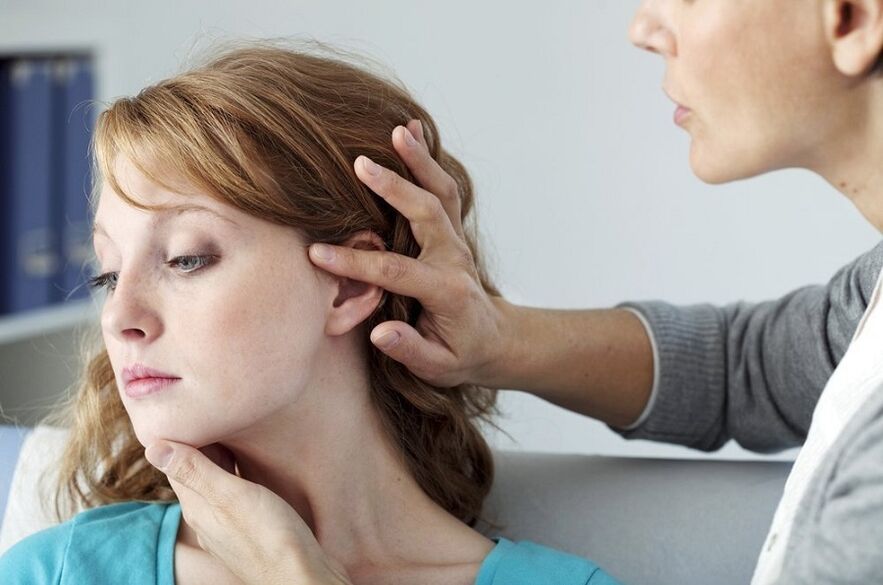
Flat warts are almost always small and have a smooth (rarely scaly) surface. Its coloration may practically not be anything different from skin color, so people often live with such shapes and don't even notice them. Most often, such epithelial flat shapes appear on the skin in groups.
The therapist will be able to accurately detect and pinpoint flat warts on the face or, for example, on the back of the hand during the first appointment. A visual examination should be enough for a qualified doctor to understand what he is dealing with. If the dermatologist suspects the hypothetical diagnosis, additional diagnoses, including laboratory tests, may be ordered.
Diagnosis of papillomavirus infection in humans
The clinical manifestations of warts depend mainly on where they form. Each of the individual types of carcinoma described above has its own unique characteristics.
- Common warts are characterized by marked hyperkeratosis (high rate of cell division of the horny layer and desquamation).
It may look like a nodule or dome-shaped papule. Such warts mainly appear in areas where there is an increased risk of tissue damage, that is, on the skin of the hands, feet, and elbows.
- Flat warts have a flat top, are small in size and not exceed 3-4 mm in diameter.
If a wart is seen in an area of skin that has folds, then initial diagnosis can be difficult, as these papules or pimples can manifest themselves as flat or normal warts.
- Warts on the soles of the feet can be accompanied by painful symptoms, as these areas are often traumatized. The center of such an epithelial tumor may be slightly concave.
It's also not unusual that several warts on the sole fuse into a single structure, forming a specific pattern in the form of a mosaic.
- For filamentous warts, such a problem can appear on the facial skin.
They grow rapidly, so when discovered, they try to eliminate them like an aesthetic defect.
- In addition, warts can be diagnosed in the oral cavity, where the formation is usually manifested by small white or pink nodules.
Such a problem is found in extremely rare cases, as a rule, at appointments with dentists or during routine body exams.
Warts: treatment
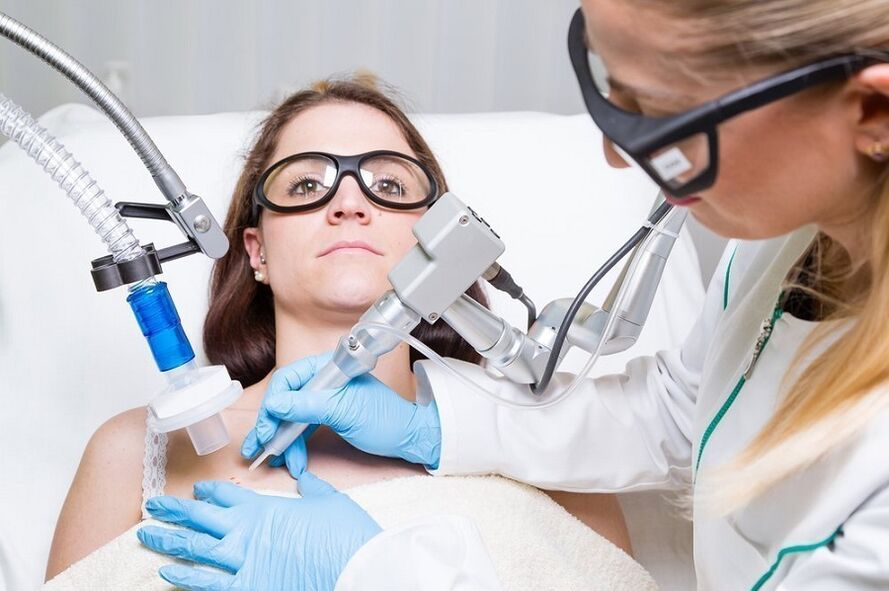
Epithelial tumors in the form of warts are treated only under the close supervision of the attending physician. Therapy cannot be general, because each individual case of the appearance and development of the disease is individual. That is why it is not advisable to use drugs that are not clear on the advice of a friend, advertiser or pharmacist in the pharmacy.
To date, there is no specific treatment for human papillomavirus. Because of this, the treatment of warts is intended to eliminate the symptoms of the damage caused by the virus.
If a patient is diagnosed with condyloma, then this type of education necessarily requires a well-chosen therapy, since there is a risk of degenerative malignancy.
There are several methods of treating warts, each with its own characteristics. The effectiveness of all treatments is approximately 70%.
Methods of treatment of warts: external therapy
Treatment of warts is mainly aimed at getting rid of them. It can be done through physical or drug intervention.
With external methods, the warts are treated intricately. Your doctor may prescribe anesthetics and keratolytics. Possibly 10% silver nitrate solution, 50% lactic acid solution.
Your doctor may recommend antiviral medication for the warts.
Cytotoxic drugs, such as fluorouracil cream, can also be used topically. Prescribed for the treatment of warts and warts covered with salicylic acid (40%).
The physical destruction of the wart can be accomplished through liquid nitrogen and coagulation. Chemical destruction of tissue can be performed using salicylic or trichloroacetic acid, sodium silver solution, sodium hydroxide.
Immunotherapy is also used. After removing the warts, the doctor can prescribe anti-inflammatory drugs.
Removing warts at home is prohibited
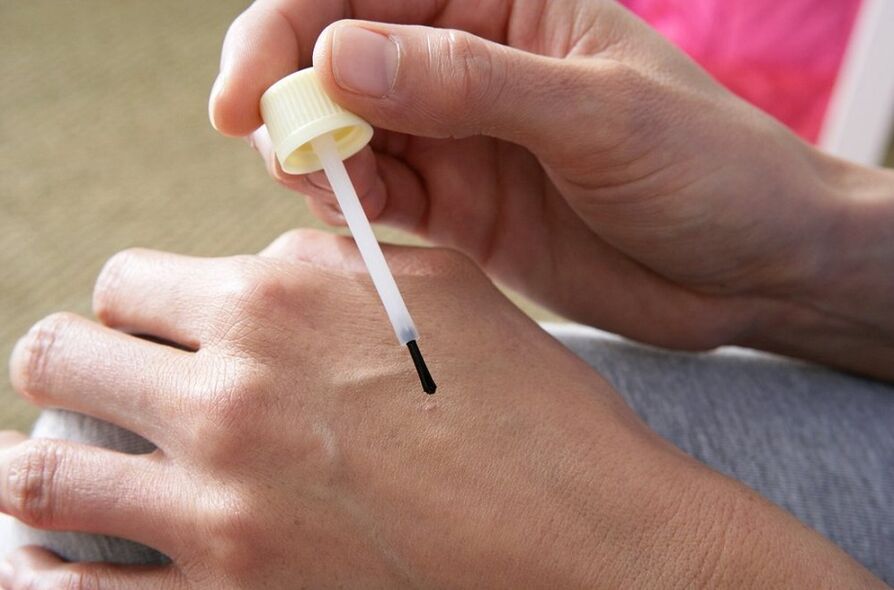
Traditional medicine, according to most, can safely treat many diseases. But this opinion is wrong, since decoctions, infusions and topicals from essential oils and herbs can only act as adjunct and in no case can be used as the primary treatment.
Combined with the effects of the drug, the specialist can prescribe alternative medicine recipes with sage, rowan, wormwood, onions, flaxseed oil, and milky.
Removing warts at home is not done. Education cannot be cut off by sharp, piercing and computerized objects. Only an authorized physician, after diagnosing a patient's condition, can prescribe complete and safe therapy. Be careful and do not self-medicate.
Removal of warts with laser and other methods
Modern medicine uses several surgical techniques to remove warts.
- Electrocautery is one of the most proven methods to remove various warts.
The manipulation is performed under local anesthesia using a coagulant. High frequency electrical current to the steel ring helps thin the epithelium and prevent bleeding during and after surgery.
- Surgical resection is indicated for extensive skin lesions.
The manipulation is performed under local anesthesia, followed by placing cosmetic sutures, after about 1 week will be removed. A small scar may remain.
- Laser removal of warts is the latest treatment.
The effect of such manipulation can be presented in the form of evaporation or coagulation of skin cells. The removal of the warts with a laser is quick and completely painless, because the procedure is performed under local anesthesia. After removing the wart, a small indentation may remain, which will disappear after 12-20 days.
Laser removal is currently offered by many medical centers and clinics.
- The warts are also removed using low heat.
Deep freezing of tissues leads to their death. Here is how to perform the liquid nitrogen de-chilling process.
Such removal of warts is carried out with a frozen instrument or a cotton swab applicator stick. In any case, the procedure is effective and only takes a few minutes.
The medicine is applied to the wart (perpendicular) and gently press the wart. The time it takes for an epithelial tumor to coagulate depends largely on its size. It usually takes 7 to 35 seconds to freeze.
It's important to know that any removal of warts does not guarantee that the problem will not reappear. The possibility of rebuilding depends on many factors, including the patient's immune system. According to statistics, the disease recurs after 3-4 months in more than 20% of patients. That is why many doctors, along with surgical removal of warts, prescribe general anti-relapse therapy.
Prevent warts

To at least protect yourself from a viral infection and reduce your body's risk of warts, doctors first recommend a healthy lifestyle. It is imperative to constantly proficiently maintain the immune system, which loses its protective functions due to constant stress, lack of sleep, malnutrition and even vitamin deficiency.
Doctors recommend:
- Refuse to have regular sex. You should have a long and healthy partner.
- Adhere to the rules of personal hygiene. You should not use other people's towels, go to public bathrooms without changing shoes.
- Correct treatment of skin lesions.
It is also important that you eat properly, have an active lifestyle, eliminate bad habits, get enough sleep, and reduce anxiety, as all of these factors negatively affect the immune system.

























